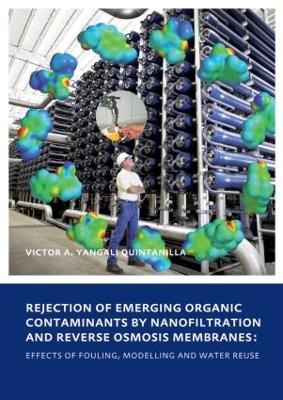
Rejection of Emerging Organic Contaminants by Nanofiltration and Reverse Osmosis Membranes
Effects of Fouling, Modelling and Water Reuse
Seiten
2010
CRC Press (Verlag)
978-0-415-58277-3 (ISBN)
CRC Press (Verlag)
978-0-415-58277-3 (ISBN)
The demand for drinking water can lead many cities to implement indirect water reuse programs, where wastewater effluent becomes part of the drinking water sources. This title demonstrates nanofiltration (NF) and reverse osmosis (RO) to be appropriate technologies for removing a large number of micropollutants from the water.
Pollution of water sources with emerging contaminants (micropollutants) is a fact known worldwide. Although the risks of micropollutants in sources of water are partly recognized, interpretation of consequences are controversial; thus, the future effects of altered water with micropollutants remains uncertain and may constitute a point of concern for human beings when potable water consumption is involved. Therefore, many drinking water utilities target as an important goal high-quality drinking water production to lessen quality considerations that may arise from the consumers. In this thesis, by means of the use of multivariate data analysis techniques, removal quantification is effectively determined and more understanding of the separation of micropollutants by membranes is achieved.
Pollution of water sources with emerging contaminants (micropollutants) is a fact known worldwide. Although the risks of micropollutants in sources of water are partly recognized, interpretation of consequences are controversial; thus, the future effects of altered water with micropollutants remains uncertain and may constitute a point of concern for human beings when potable water consumption is involved. Therefore, many drinking water utilities target as an important goal high-quality drinking water production to lessen quality considerations that may arise from the consumers. In this thesis, by means of the use of multivariate data analysis techniques, removal quantification is effectively determined and more understanding of the separation of micropollutants by membranes is achieved.
Victor Augusto Yangali Quintanilla
1. Introduction; 2. Theoretical Background; 3. Removal of PhACs and DECs by Membranes; 4. Effects of NOM and Surrogate Foulants on the Removal of Emerging Organic Contaminants; 5. QSAR approach for Modelling and Prediction of Rejections of Organic Solutes; 6. Data-driven Modelling Applying QSAR and ANN; 7. Implementation of NF as a Robust Barrier for Organic Contaminants during Water Reuse Applications; 8. Recommendations.
| Verlagsort | London |
|---|---|
| Sprache | englisch |
| Maße | 174 x 246 mm |
| Gewicht | 408 g |
| Themenwelt | Naturwissenschaften ► Biologie ► Ökologie / Naturschutz |
| Technik ► Bauwesen | |
| Technik ► Umwelttechnik / Biotechnologie | |
| ISBN-10 | 0-415-58277-6 / 0415582776 |
| ISBN-13 | 978-0-415-58277-3 / 9780415582773 |
| Zustand | Neuware |
| Haben Sie eine Frage zum Produkt? |
Mehr entdecken
aus dem Bereich
aus dem Bereich


